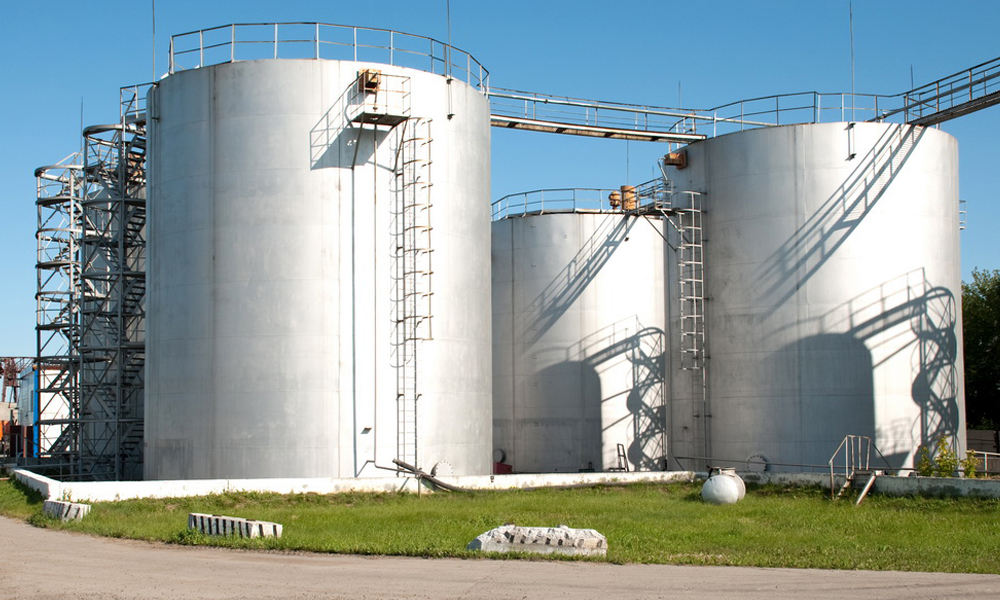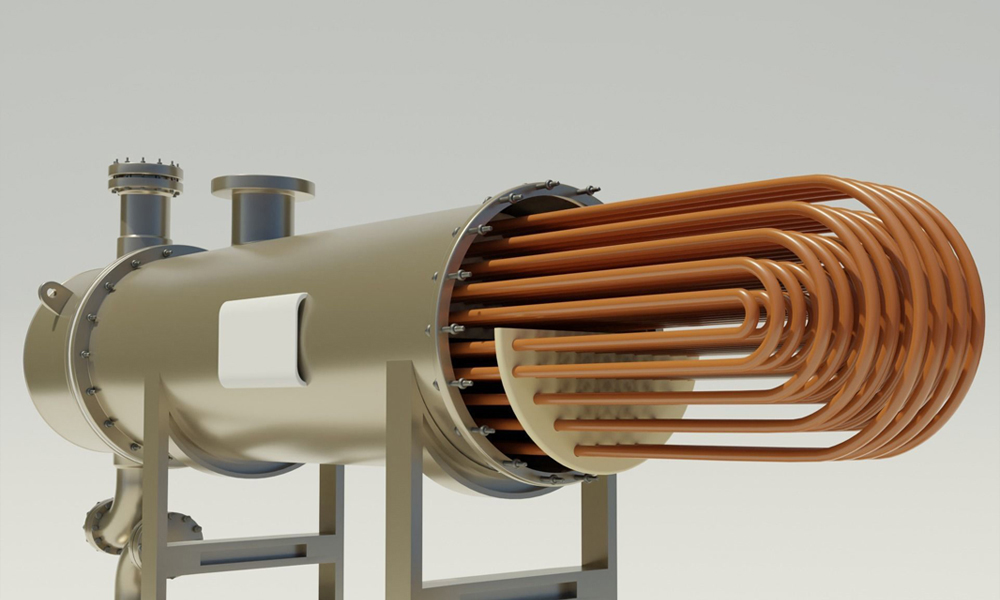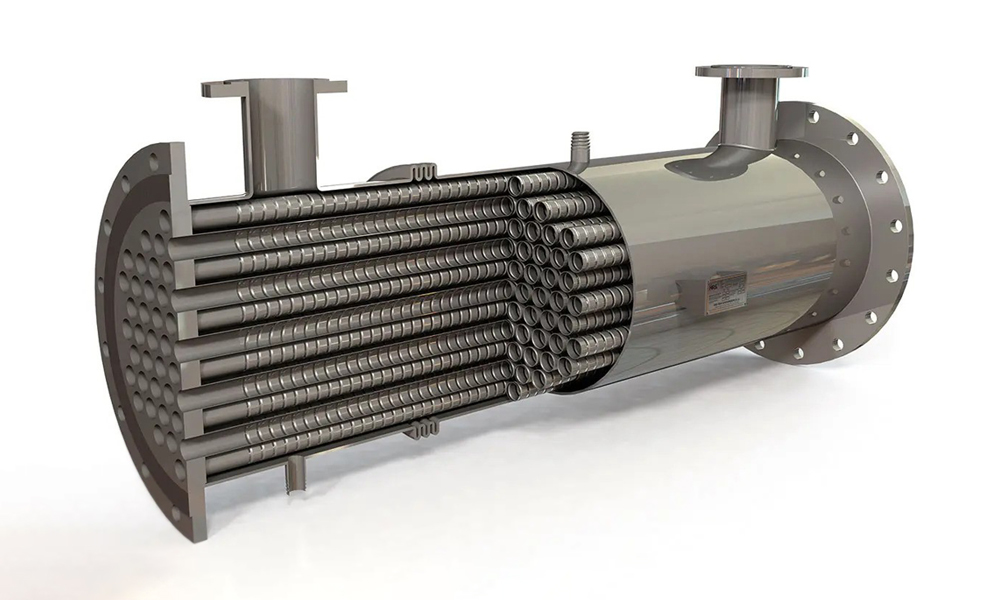Spherical storage tanks are among the most critical equipment in the oil, gas, and petrochemical industries due to their high capacity to withstand pressure and uniformly distribute stress. These tanks, classified as pressure vessels, are designed and manufactured for storing liquefied gases such as LNG, LPG, and other chemicals. This article examines the international standards used in the design and construction of spherical pressure tanks, the importance of these standards, and the role they play in enhancing the safety and efficiency of such equipment. Petrosazeh Beinolmelal Aram Company (Petrosazeh), as one of the pioneers in EPC project design and execution in Iran, has an extensive and impressive track record in spherical tanks.
Importance of International Standards in Spherical Tank Construction
International standards play a fundamental role in ensuring the safety, quality, and efficiency of spherical tanks. Given that these tanks are designed to store high-pressure and potentially hazardous materials, strict adherence to standards can prevent catastrophic accidents. Standards such as ASME BPVC, API 510, and EN 13445 provide comprehensive guidelines from design to operation, minimizing potential risks and laying the groundwork for safe and durable structures.
In addition to safety considerations, compliance with these standards boosts the credibility of manufacturers in international markets. Companies like Petrosazeh that prioritize recognized standards are more capable of undertaking international projects with confidence. These standards also facilitate cross-border collaboration and the export of products, making their understanding and mastery essential for any professional manufacturer.
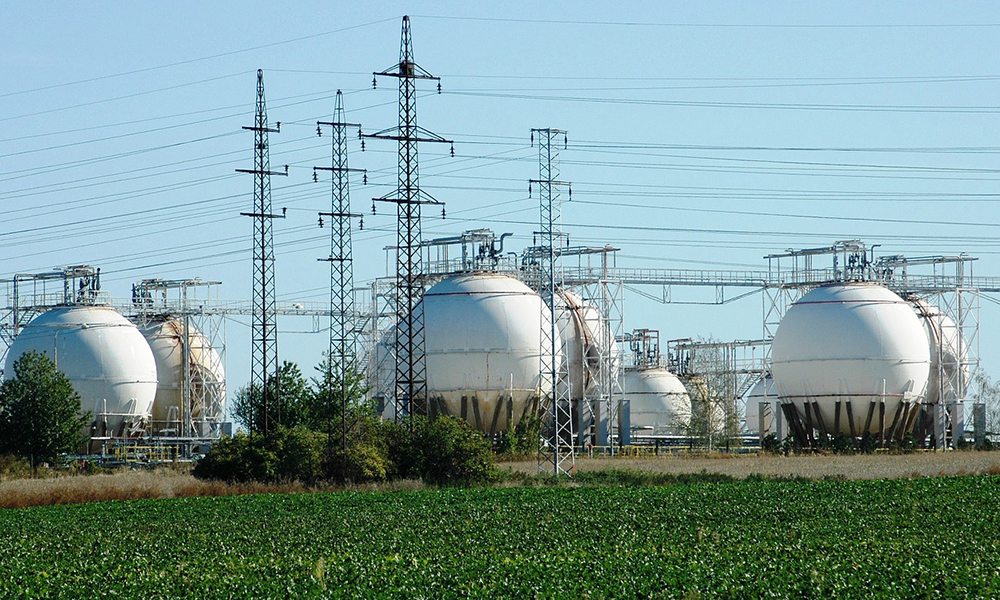
ASME BPVC Standard and Its Role in Spherical Tank Construction
The ASME Boiler and Pressure Vessel Code (ASME BPVC) is one of the most authoritative international references for the design and construction of pressure equipment. Section VIII of this standard specifically addresses pressure vessel design, including comprehensive regulations on material selection, structural design, welding methods, and quality control testing. Within this section, Division 1 focuses significantly on high-pressure vessel design.
A notable aspect of this standard is its method for calculating tank wall thickness. Considering internal pressure, tank diameter, and material properties, it provides formulas to determine the minimum required thickness. Due to uniform stress distribution in spherical tanks, they require less thickness, reducing material consumption. However, the use of materials like A516-Gr70 carbon steel or stainless steel is recommended to ensure resistance to pressure and corrosion.
ASME BPVC also outlines strict requirements for welding, inspection, and non-destructive tests such as radiographic and ultrasonic testing. These tests are essential for identifying potential defects and preventing leakage or explosions. Petrosazeh adheres strictly to these requirements, producing tanks that meet the highest global standards.
API 510 Standard and Inspection of Spherical Pressure Tanks
The API 510 standard, developed by the American Petroleum Institute, focuses on the inspection, repair and maintenance of pressure vessels and is particularly important for spherical tanks in refining and petrochemical industries. It provides structured guidelines for assessing the physical condition of tanks, thereby supporting their safe operation throughout their service life.
A key component of API 510 is its emphasis on non-destructive testing (NDT), such as ultrasonic and radiographic inspections, which are highly effective in detecting cracks, voids, and welding flaws. The standard also outlines methods for evaluating corrosion and estimating the remaining service life of tanks, which is vital for planning maintenance and avoiding unexpected failures.
Petrosazeh implements precise inspection processes based on API 510 in its projects. Utilizing modern equipment and skilled personnel, the company ensures that all spherical pressure tanks maintain their safety and operational stability. Compliance with this standard also contributes to minimizing environmental risks.
EN 13445 Standard and Its Application in Europe
The EN 13445 standard, widely used across Europe, replaces the older BS 5500 and defines stringent requirements for the design and construction of pressure vessels, including spherical tanks. While ASME BPVC is more prevalent in the US and the Middle East, EN 13445 is the main reference standard in European countries.
This standard emphasizes the use of materials that can withstand high pressure and temperature, and offers detailed instructions for wall thickness calculation, stress analysis, and structural stability evaluation. One of EN 13445’s standout features is its special attention to earthquake-resistant design, which is vital for tanks installed in seismically active regions. It also comprehensively addresses safety systems such as pressure relief valves and sensors.
Petrosazeh has full command of this European standard and is capable of designing and manufacturing tanks tailored to the European market. The use of advanced engineering software and numerical analysis tools ensures that products meet EN 13445 requirements—an essential advantage in export-oriented projects.
Materials Used in Spherical Tank Construction
Selecting the right raw materials is crucial for manufacturing spherical storage tanks under pressure. These materials must withstand high pressures, varying temperatures, and harsh environmental conditions. The most commonly used material is A516-Gr70 carbon steel, prized for its strength and cost-effectiveness. However, in corrosive environments or in contact with certain chemicals, stainless steel or anti-corrosion coatings become necessary.
For specialized applications like storing LNG or LPG, composite tanks made from carbon or glass fibers with epoxy resin are used. These materials are not only lightweight but also highly resistant to corrosion, making them ideal for sensitive environments. ASTM standards provide systematic guidelines for selecting materials based on physical, chemical, and mechanical properties.
The choice of material also affects the welding method. Accurate welding and the use of appropriate fillers are crucial to prevent cracks and degradation of mechanical properties. Standards such as AWS D1.1 and ISO 5817 provide technical welding guidelines, all of which Petrosazeh rigorously follows in its projects.
Read more: Guide to Choosing Materials for Pressure Vessel Construction

Manufacturing Methods for Spherical Pressure Tanks
Due to technical complexities and stringent safety requirements, constructing spherical tanks requires skill, experience, and advanced technology. One common forming method is explosive forming, where pre-prepared metal sheets are shaped into a sphere using controlled explosions. This method is especially suitable for large, high-pressure tanks.
Another method is the petal method, where sheets are cut into smaller segments shaped like petals, then bent, rolled, and assembled on-site. This method allows easier transportation and on-site construction, though it involves more welds and thus requires stricter quality control. Petrosazeh is proficient in both methods and uses modern equipment to select the most suitable construction process based on project needs.
After construction, tanks undergo hydrostatic or pneumatic pressure tests, according to ASME BPVC Section VIII Division 1, to ensure leak-free and structurally sound performance.
Read more: Types of welding used in pressure vessels

Advantages of Spherical Tanks over Cylindrical Tanks
Spherical tanks offer significant technical and economic advantages over cylindrical tanks due to their unique geometry. The most important benefit is uniform stress distribution across the tank surface, allowing them to withstand higher pressures with thinner walls. This reduces material usage, lowers overall weight, and results in cost savings.
Other benefits include reduced fluid contact surface, minimizing heat transfer—an essential feature for temperature-sensitive materials like LNG. These tanks also occupy less space, making them ideal for sites with space constraints. Petrosazeh leverages these advantages to deliver high-efficiency designs for oil and petrochemical projects.
However, it’s important to note that spherical tanks are more complex and expensive to build than cylindrical ones. Therefore, their use is more justified in high-pressure or large-volume storage applications. Petrosazeh’s technical and economic analyses help clients choose the most appropriate solution.
Read more: The Manufacturing Process of Spherical and Cylindrical Pressure Vessels
Safety Requirements in Spherical Tank Design and Operation
Safety is critical in the design and operation of spherical pressure tanks. Storing flammable or toxic materials under pressure carries risks such as explosions or leaks. Standards like ASME BPVC and API 510 provide detailed safety requirements for components such as relief valves, pressure sensors, alarm systems, and fire suppression systems.
Routine inspections and preventive maintenance are also key safety requirements. Advanced methods like acoustic sensors are used to monitor for potential cracks in tank walls. Moreover, EN 1998-4, dedicated to seismic design, sets strict criteria for tank installations in earthquake-prone areas.
Human resource training is another pillar of safety. Operators and users must be familiar with equipment operation, emergency procedures, and safety regulations. Petrosazeh offers specialized training courses to clients and end-users to enhance safety levels.
Read more: How do pressure tanks work?

Challenges in Spherical Tank Fabrication and Installation
Fabrication and installation of spherical tanks come with various engineering and operational challenges. One major challenge is high-quality welding, as even minor defects can cause cracks, leaks, or structural failure. AWS D1.1 provides comprehensive guidance on safe and effective welding, which Petrosazeh strictly follows.
Another challenge is transporting and installing large and heavy components. Often, these parts are manufactured off-site and then transported to the project location, requiring specialized equipment and skilled personnel. Petrosazeh possesses the necessary tools and experienced teams to carry out these operations with precision.
Environmental compliance at the installation site is also crucial. Advanced monitoring and control systems are installed on tanks to detect and manage leaks quickly, preventing environmental contamination.
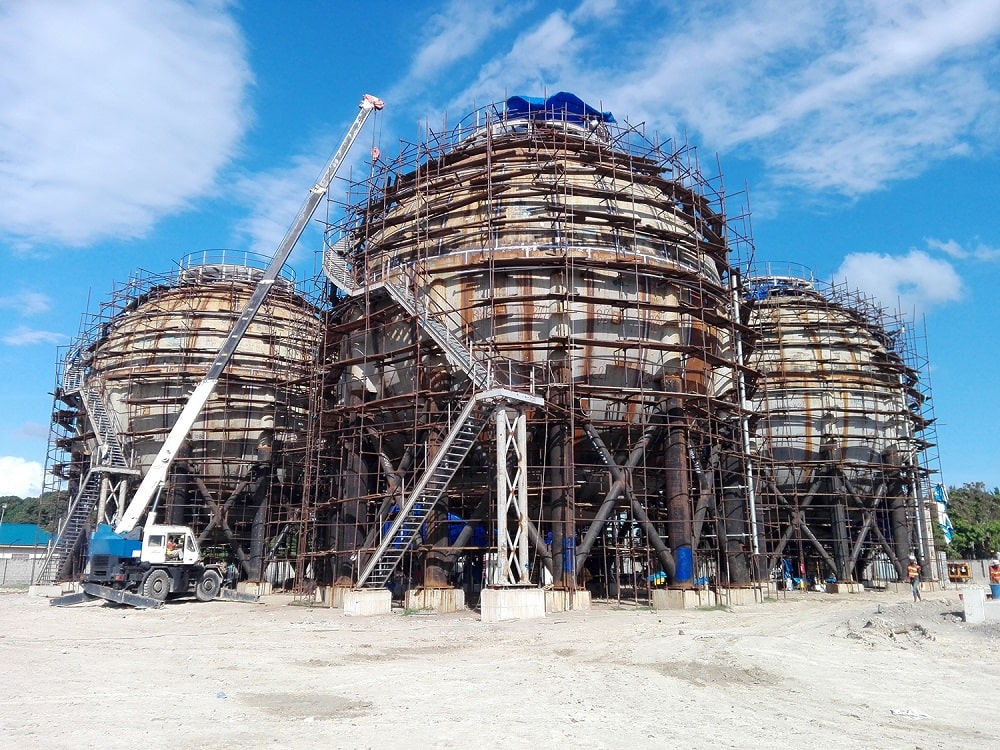
The Future of Spherical Tanks in the Oil and Gas Industry
As the demand for safe and cost-effective storage grows in the oil and gas industry, spherical tanks will continue to play a vital role. Emerging technologies—such as advanced composite materials and IoT-enabled smart sensors—are shaping a more modern and dynamic future for these systems. These innovations enable real-time monitoring and predictive maintenance.
Petrosazeh is investing continuously in R&D to implement these technologies in future projects. The company also collaborates with international bodies to help develop new standards aligned with evolving industry needs.
Sustainability is gaining importance too. The use of recyclable materials and energy-efficient designs is now a priority, and Petrosazeh is making significant strides in this direction.
The Role of Petrosazeh Beinolmelal Aram Company in Spherical Tank Projects
Petrosazeh Beinolmelal Aram Company (IPS), with nearly two decades of experience in the design and construction of spherical pressure tanks, is recognized as a leader in this industry in Iran. By adhering to global standards such as ASME BPVC, API 510, and EN 13445, the company produces safe, durable tanks that meet current industrial demands. Its executed EPC projects in petrochemical plants and refineries demonstrate Petrosazeh’s expertise, quality, and innovation.
Beyond construction, Petrosazeh provides consulting, engineering analysis, periodic inspections, and training services to ensure optimal and safe equipment performance. The use of advanced software like Abaqus and ANSYS for stress analysis and structural design is one of the company’s strengths in executing complex and sensitive projects.


